Editor’s Note: Our book clubs are regularly set aside as exclusive experiences, as thanks to our Patrons, whose generosity helps us bring wisdom, kindness, and joy to the world.
Today, we hope you’ll enjoy this edition of The Yellow Wall-Paper book club, as our National Poetry Month gift to you—a piece that ordinarily would have been for patrons only.
***
Life is very much more exciting now than it used to be.”
Uh oh. Cue the ominous oboe music.
Our Lady has gone round the bend. She’s hallucinating smells or perhaps being haunted by an olfactory-proficient ghost. She’s destroying property!
And yet her madness is divinest sense.
Much Madness is divinest Sense –
To a discerning Eye –
Much Sense – the starkest Madness –
’Tis the Majority
In this, as all, prevail –
Assent – and you are sane –
Demur – you’re straightway dangerous –
And handled with a Chain –
—Emily Dickinson
Where once Our Lady saw only ugliness, she now sees beauty. She has a kinship not just with the Someone shaking the wallpaper but with all women who are trapped — in any time, in any place, in any way. She’s creeping her way to freedom. She’s removing long strips of wallpaper while lazier people sleep. She’s outwitting John!
At the beginning of the story, Our Lady doubts herself; at the end, she doubts him (and it’s about darn time). Sure, she’s gnawing the bedstead, but a girl’s gotta do what a girl’s gotta do to get rid of that horrid pattern, with “All those strangled heads and bulbous eyes and waddling fungus growths.”
She’s almost free! Free as the other women:
There are so many of those creeping women, and they creep so fast. I wonder if they all came out of that wall-paper as I did?”
It happens that quickly, that unexpectedly. Suddenly Our Lady is the Someone. She is the one who creeps along the floor of the yellow-papered room, who creeps over John, whose end is a beginning.
Barkat’s illustrations reach a peak in this section, illustrating a smell, a plethora of trapped women, and a spiral staircase her husband never climbs. Every page is bonkers and beautiful, as befits the text.
One of the story’s enduring mysteries is the identity of Jane: “I’ve got out at last, in spite of you and Jane?” Barkat and I have different views on this, and even discerning eyes disagree — either Jane is a typo for Jennie (John’s sister) or Jane is the name of the unnamed narrator. The name only appears once, here at the end, so that question mark hangs with no explanation.
Whatever her actual name, Our Lady has now ceased to consent to John’s care. She’s demured and demured, been all but chained inside the room with the yellow wallpaper, and now she’s “straightway dangerous.” She leaves him fainted on the scratch-filled floor and creeps free.
Barkat’s final panel echoes earlier ones where she saw the Someone “in that long shaded lane” and “in those dark grape arbors” and “on that long road under the trees.” Finally Our Lady can walk those same paths. Whatever her ending actually is, it’s clear she prevails.
For Discussion
1) This story is often taught through a feminist lens. What parts fit into that narrative and what parts don’t?
2) Emily Dickinson died at the age of 56, only six years before this story was published. What do you think she might have made of it?
3) Now that you know the story, go back and slowly peruse Barkat’s illustrations. What do they add to the text?
Thanks for coming along with us on this ghostly journey as we read The Yellow Wall-Paper by Charlotte Perkins Gilman, illustrated by Sara Barkat together this month. May all your wallpapers be the sort of yellow that sets you free.
Photo by karin and the camera, Creative Commons, via Flickr. Post by Megan Willome.
Browse more The Yellow Wall-Paper book club
- Perspective: The Two, The Only: Calvin and Hobbes - December 16, 2022
- Children’s Book Club: A Very Haunted Christmas - December 9, 2022
- By Heart: ‘The night is darkening round me’ by Emily Brontë - December 2, 2022
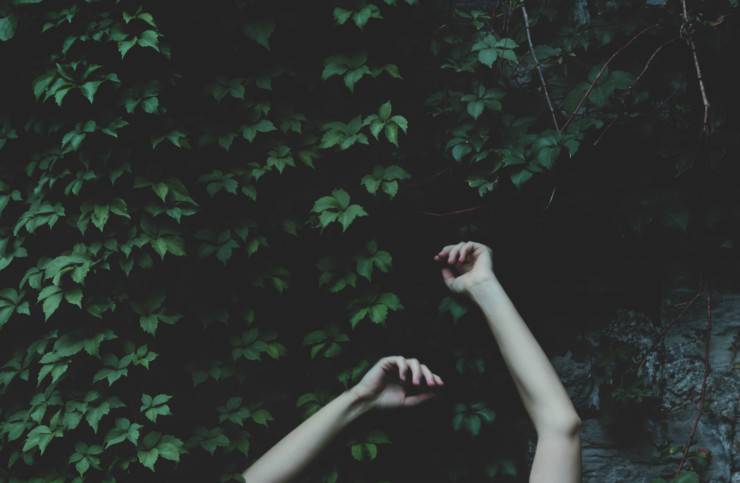

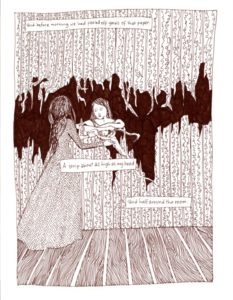
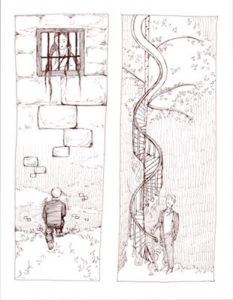
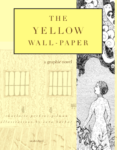
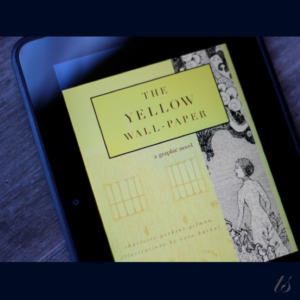
L.L. Barkat says
Last night I was reading a book about wild edibles, and I came across the chapter devoted to Plantain, and then I was wondering what it meant to Gilman… was wondering how much of what used to be commonly known about the plant informed her use of it in the story.
So plantain is anti-poison. It is also considered an aphrodisiac. Both of those qualities feel fitting for this juncture in the story as Sara has drawn it. Our Lady has become more sensual by the moment and she’s been trying to free herself from what has been cast as a poisonous paper. (Sara told me, btw, that there was a yellow dye in wallpapers at the time that was quite poisonous and had damaged people.)
Anyway, the key is under the plantain leaf. He retrieves it. But, his use of the key never does end up connecting him to Our Lady, because, though he has the key, he himself has not taken the plantain possibilities with him, and he faints dead away, impotent. This story just always seems to have more to consider. So fascinating. So well-written. (And now, fascinatingly drawn. 🙂 )
Megan Willome says
I did not know that about the dye, but am not terribly surprised.
Also, I had not noticed the plantain leaf. Is it the same plantain that’s the banana-like fruit so often found in Cuban food?
L.L. Barkat says
It’s a humble rosette-style “weed” that grows in every region of the world. It’s used to draw poison out of insect bites. You can eat it, too, though it’s best when quite small and tender. 🙂